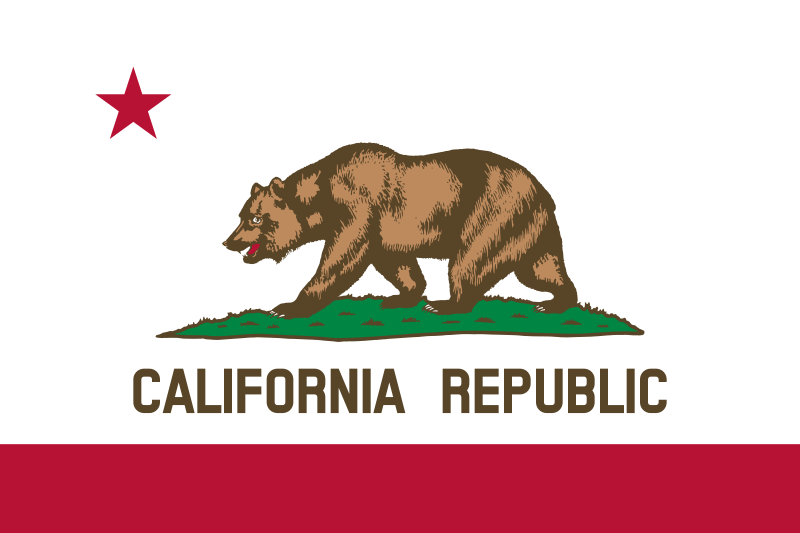The California State Legislature passed a constitutional amendment, titled Proposition 50, to allow the state to use a new congressional district map for 2026 through 2030. Voters will decide on the measure in a special election on Nov. 4, 2025.
California Gov. Gavin Newsom (D) proposed allowing the Legislature to redraw the state's congressional districts following a mid-decade redistricting plan being proposed in Texas. President Donald Trump (R) described that plan as “just a very simple redrawing, we pick up five seats.” Gov. Newsom said the ballot measure is intended to counter the proposal in Texas: "They’re not screwing around. We cannot afford to screw around either. We have got to fight fire with fire."
On Aug. 21, the Legislature passed the constitutional amendment, which was introduced on Aug. 18.
- In the Assembly, the vote was 57-20. At least 54 votes were needed. Among Democrats, the vote was 57-1, with two members not voting or not present. The Assembly's 19 Republicans opposed the constitutional amendment. The one Democrat who voted "No" was Asm. Jasmeet Bains (D-35).
- In the Senate, the vote was 30-8. At least 27 votes were needed. All Senate Democrats voted for the constitutional amendment. Among Senate Republicans, eight voted against the proposal, and two did not vote or were not present.
Gov. Newsom also signed legislation on Aug. 21 calling for the special election. He said, “We’re neutralizing what occurred [in Texas], and we’re giving the American people a fair chance, because when all things are equal, we’re all playing by the same rules.”
Assembly Minority Leader James Gallagher (R-3), who voted against the legislation, said, “We know that it’s about power on both sides, rigging congressional districts to get partisan results. That’s what a gerrymander is. … You move forward fighting fire with fire, and what happens? You burn it all down. In this case, it affects our most fundamental American principle: representation.”
Under Proposition 50, the state would use a new congressional district map from Assembly Bill 604 (AB 604). The proposed map would replace the existing maps, which the 14-member Citizens Redistricting Commission adopted on December 27, 2021, for elections from 2022 through 2030. Proposition 50 would provide that the Citizens Redistricting Commission will redraw congressional districts in 2031.
AB 604 contains the proposed congressional district map, which cannot take effect without voter approval of Proposition 50. According to Kyle Kondik and J. Miles Coleman, "this map would give Democrats a chance to win up to five additional seats. Three of their targeted seats would be fairly easy pickups, while two of them would be more like Toss-ups." The former three seats are Reps. Doug LaMalfa (R-1), Kevin Kiley (R-3), and Ken Calvert (R-41), while the latter two seats, described as toss-ups, are Reps. David Valadao (R-22) and Darrell Issa (R-48). Currently, Democrats hold 43 of 52 of the state's seats in the U.S. House, and Republicans hold the other nine.
Proposition 50 would also add language to the California Constitution declaring: "It is the policy of the State of California to support the use of fair, independent, and nonpartisan redistricting commissions nationwide. The people of the State of California call on the Congress of the United States to pass federal legislation and propose an amendment of the United States Constitution to require the use of fair, independent, and nonpartisan redistricting commissions nationwide."
Campaigns have launched to support and oppose Proposition 50. The Election Rigging Response Act, Governor Newsom’s Ballot Measure Committee PAC is leading the campaign supporting the constitutional amendment.
No on Prop 50 - Protect Voters First and Stop Sacramento's Power Grab registered as PACs opposing Proposition 50. Charles Munger, Jr. is listed as the principal officer of No on Prop 50 - Protect Voters First. Jessica Millan Patterson, former chairperson of the California Republican Party, is listed as the principal officer of Stop Sacramento's Power Grab.
The current process, involving a non-politician commission, was established through ballot measures in 2008 and 2010, following the defeat of a related proposal in 2005. Gov. Arnold Schwarzenegger (R) campaigned for several of the ballot measures, stating in January 2005 that “the current system is rigged to benefit the interests of those in office and not those who put them there. We must reform it.” As the redistricting process was established in the California Constitution, changes required voter-approved constitutional amendments.
In 2005, Schwarzenegger proposed Proposition 77, which would have transferred redistricting from the legislature to a panel of three retired judges. Voters rejected Proposition 77, with 59.7% voting ‘No.’
In 2008, California Common Cause proposed Proposition 11, which transferred state legislative redistricting from the legislature to a 14-member California Citizens Redistricting Commission. Proposition 11 was approved, with 50.8% of the vote.
Proposition 11 did not address congressional redistricting. In 2010, Charles Munger, Jr., a physicist and political donor, filed Proposition 20, which transferred congressional redistricting from the legislature to the California Citizens Redistricting Commission. Voters approved Proposition 20, with 61.2% of the vote.
Alongside Proposition 11, voters decided a competing ballot measure, Proposition 27, which would have eliminated the California Citizens Redistricting Commission, returning the state legislative redistricting process to the California State Legislature. Voters rejected the ballot initiative, with 59.4% voting ‘No.’
Proposition 50 is the first statewide ballot measure to appear during an odd-numbered year since 2005, when Gov. Schwarzenegger called a special election that included Proposition 77, an initiated constitutional amendment that also addressed redistricting.
Additional reading:


